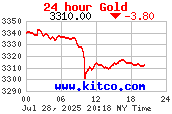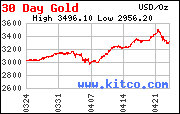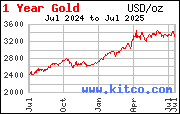HOW TO PROSPER IN THE AGE OF OBAMANOMICS:
A Ruff Plan for Hard Times Ahead
BY
HOWARD J. RUFF
CHAPTER 5
THE PHONY SOCIALIST HEALTH-CARE CRISIS:
The Biggest Power-Grab of All
A government that is big enough to give you all you want is big enough to take it all
away.—Barry Goldwater
We are inevitably following the rest of the world into the fetid swamps of a massive
national health-care (sick care?) program. It will dwarf all current expenditures on Social
Security, Medicare, and Medicaid by trillions of dollars—and they are already burying us! It’s
the ultimate socialist grab for power.
The average politically ignorant American who ignores or knows nothing about history
will say, “Why not? Other countries do it? Why not us?”
Why not? For the simple reason that it doesn’t work in other countries and it won’t work
here.
The consequence of national health-care will be rationing. When we discover we can’t
afford to do everything that was promised, we will have to ration it by price and time. The only
way for Obama to keep his promises about the lower cost of health-care is by price controls,
which will make it cheaper, yes, but you’ll have to wait in line for service, often for months.
Seniors will be denied care that costs too much, like chemotherapy or heart-bypass surgery.
All the health-care promises that are being made are impossible to keep. Some
government agency will determine whether or not it is cost effective to use an expensive new
drug or procedure that might cure you, but if in their cold-blooded opinion it costs too much, you
will not be allowed to buy it personally at any price. Bureaucrats alone, not doctors, will make
those life-and-death decisions.
Soon your family doctor will give up the health-care business because he can’t cope with
all the government forms, he’ll be swamped by trying to help too many patients, and the
government keeps underpaying him. He will have to work harder for less money, so who could
blame him for quitting?
The doctor shortage will only get worse when fewer and fewer students are willing to
become doctors because it’s not worth the return on investment medical school requires.
Sick Care
Honestly, we’re not really talking about health-care; we’re talking about “sick care,” even
in America. Our system isn’t designed to keep you healthy; even our current system only helps
you if you get sick or injured.
It’s like laws against guns. People buy guns to protect themselves because the police will
only help you if a crime has already been committed. Law enforcement will do little or nothing
to help prevent the crime.
It’s the same thing with your doctor. How many of you have ever gone to your doctor for
a serious health checkup—to find out if you have a problem that could be treated in its early
stages? Some of us do, but most don’t. Maybe that’s because health insurance has trouble paying
for it.
Lessons from Canada
A U.S. national health-care program will mimic Canada’s, where patients needing urgent
treatment or surgery often have to wait for months—or they go to America, if they can afford it.
In Canada and several European countries, it is against the law to get around the national
health-care system by paying a private practitioner. You have no choice, unless you are rich
enough to go to America.
Dennis Gartman makes the following points in his newsletter,
www.thegartmanletter.com. He says:
If you think government-controlled health-care is a good idea, consider this:
In the U.S. 93 percent of those diagnosed with diabetes receive treatment
within six months. In Canada, only 43 percent do!
For those seniors needing hip and knee replacement, 43 percent of Canadians
get it done in six months ... in the U.S., 90 percent do
In the U.S. there are 71 MRI or CT scanners available per every million
people. In Canada, there are but 18.
Heaven help you if you have something really wrong in Canada. If that’s the case, you’ll run
south of the border faster than you can reach a specialist anywhere there.
I don’t want some nameless bureaucrat deciding who gets to live or die in the name of his
scientific and federal orthodoxy. Obama and the majority in Congress are planning bureaucrat
rationing for our future, and senior citizens will suffer the most. As a senior, I have a target on
my back.
Obama’s Assault on Seniors
As this is written, legislation now being rammed through Congress—HR-3200 and
Senate Health Committee Bill—will pressure the elderly to end their life prematurely and doom
baby-boomers to painful later years.
Democrats in Congress want to pay for the $1.6 trillion health bill with new taxes and a
$500-billion cut to Medicare. The Congressional budget office estimates only one percent of
Medicare cuts will come from “reform” aimed at eliminating fraud, waste, and abuse. That
means the other 99 percent has to come from cutting benefits.
Comparative Effectiveness Research
The assault against seniors began with the stimulus package that became law in February,
2009. Slipped into the bill was substantial funding for “Comparative Effectiveness” research,
which means “limiting care based on the patient’s age.” The cost of treatment (about $50,000 a
year) is divided by the number of years that the patient is likely to benefit. In Britain, the formula
leads to denying life-extending treatment for elderly patients who have fewer years to benefit
from care than younger patients.
When Comparative Effectiveness appeared in the stimulus bill, Representative Charles
Boustany, Jr. (R:LA), a heart surgeon, warned that it would lead to “denying seniors with
expensive illnesses any life-giving care.” He and Senator John Kyl (R:AZ) proposed to no avail
amendments which would have barred the federal government from using the research to
eliminate treatments for the elderly or to deny care based on age.
Nancy Pelosi and White House Budget Chief, Peter Orszag, asked Congress to delegate
its authority over Medicare to a newly created body within the executive branch. This was
obviously designed to circumvent the democratic process and avoid accountability to the public
for cuts in benefits.
Medicare Cutbacks
Medicare is running out of money. The problem is there are too many seniors compared
with the smaller number of workers supporting the system with payroll taxes. Inevitably, less
money and more patients will necessitate rationing.
The Congressional Budget Office wants to inch up the eligibility age one month per year
until it reaches age 70 in 2043. Wealthy seniors may also be required to pay more.
Until now, Medicare has made living to a ripe old age a good value. ObamaCare will
undo that. Already, in Oregon, the state denies some elderly cancer patients care that would
extend their lives. Instead, the state pays for “physician-assisted-suicide counseling.”
The House bill being pushed by the President ensures seniors are given end-of-life
options, including refusing them care when state law allows it. On page 425 of the Health-care
Bill under consideration by the House of Representatives, it says in black and white that
everyone on Social Security (which includes all senior citizens and Social Security recipients)
will go to mandatory counseling every five years to learn (among other things) about how to
choose a way to end your suffering and your life.
The Inescapable Truth
Americans need to see past the Washington lies. Health-care reform leads to only one
place—bigger government, higher taxes, and health-care rationing. The facts are: the only way
to slash $500 billion from Medicare is to drastically cut health-care for seniors; care will be
denied based on age; the oldest and sickest will be cut first; and paying for your own care, if you
can afford it, will not even be an option.
If you are over 65, be afraid.
Be very afraid!
If you think health-care is expensive now, wait until it’s free.

























